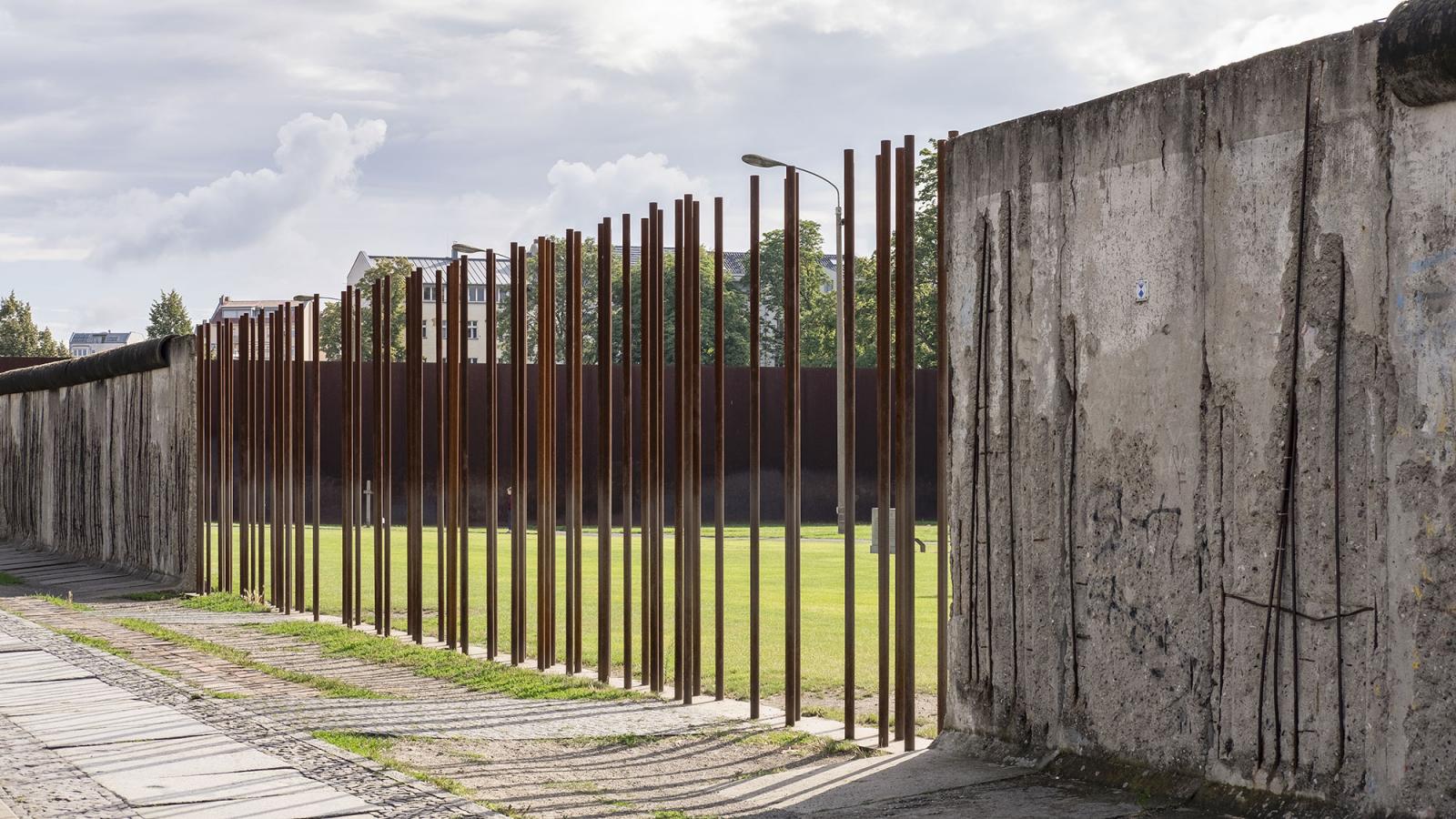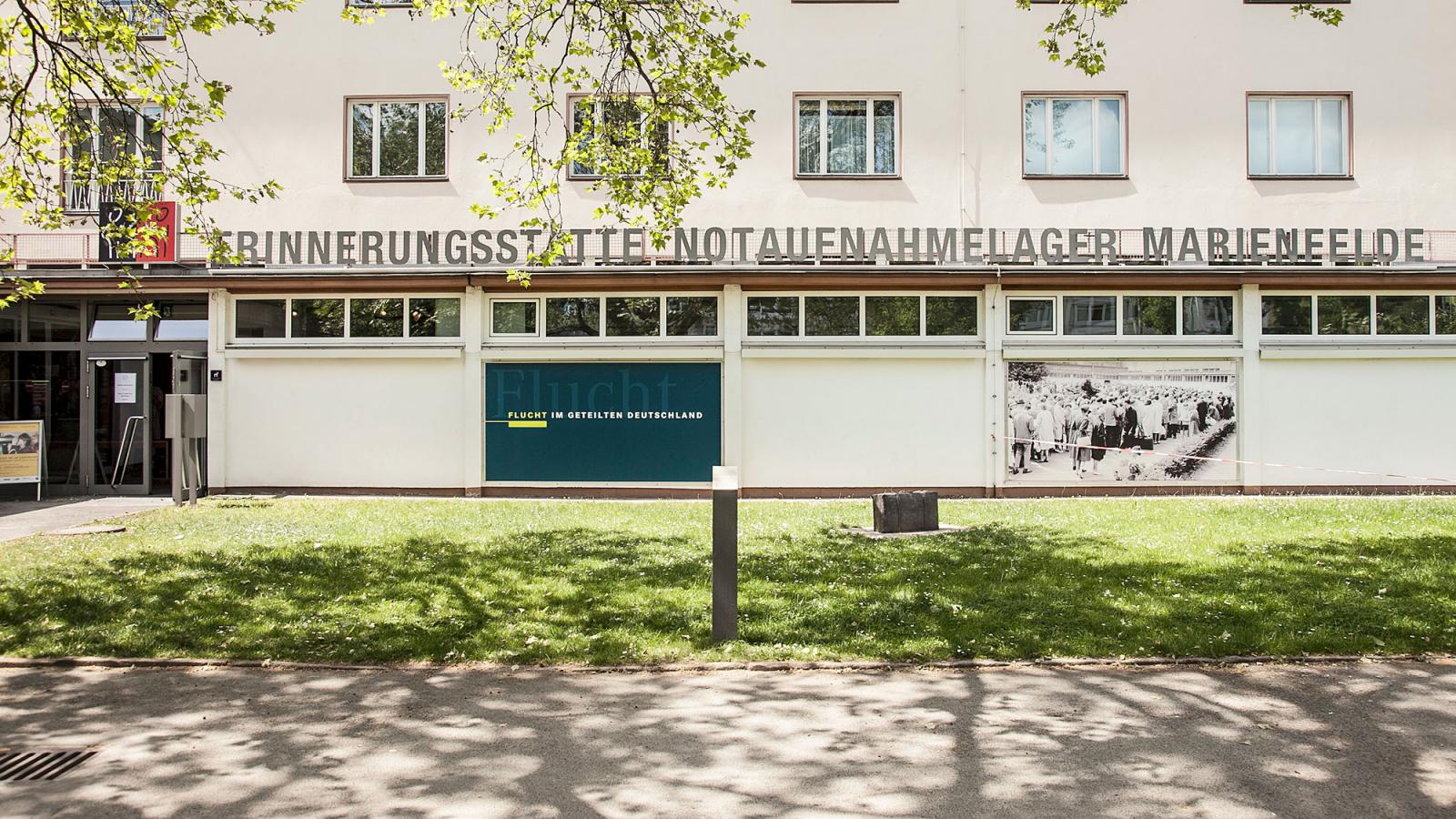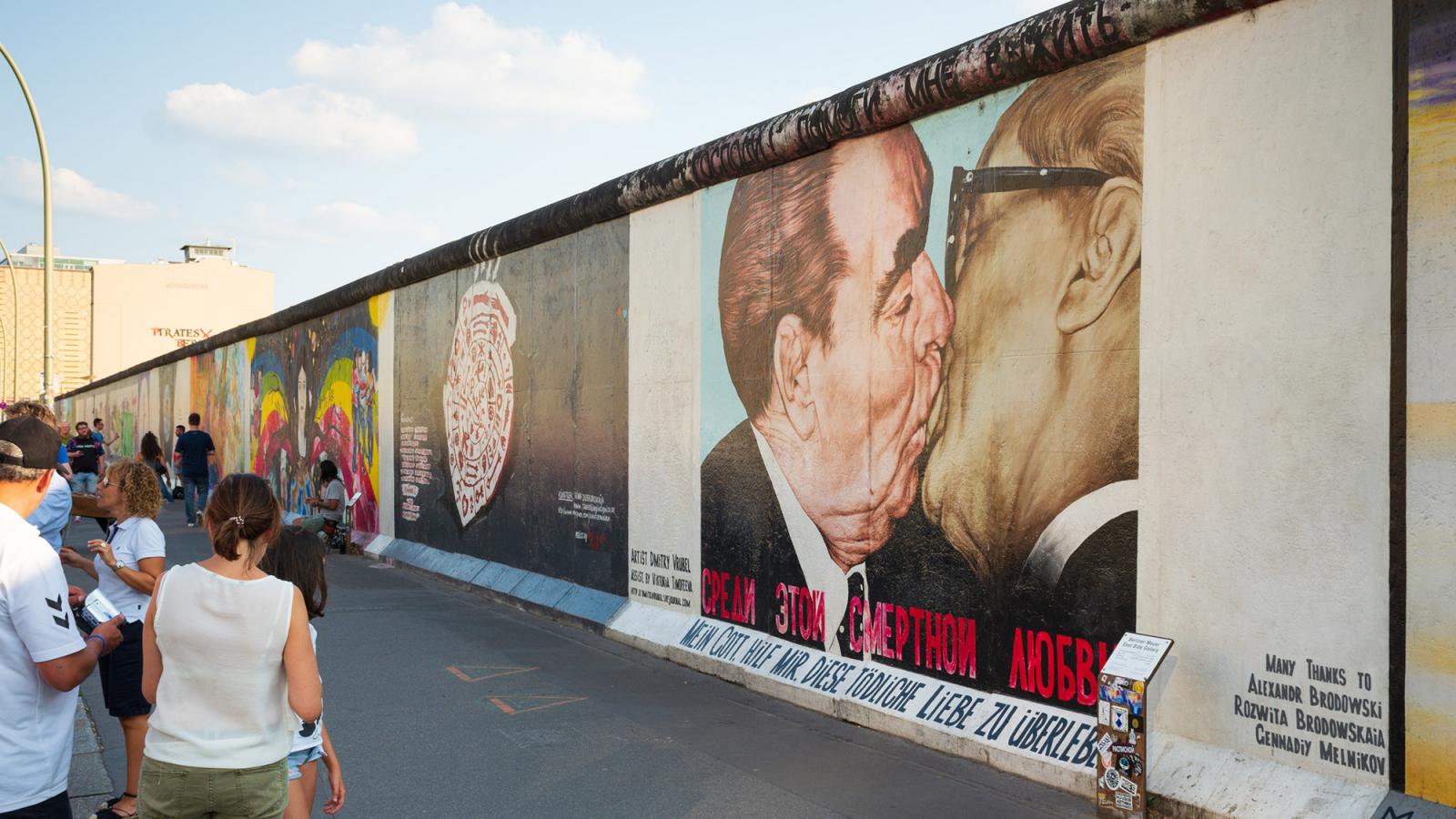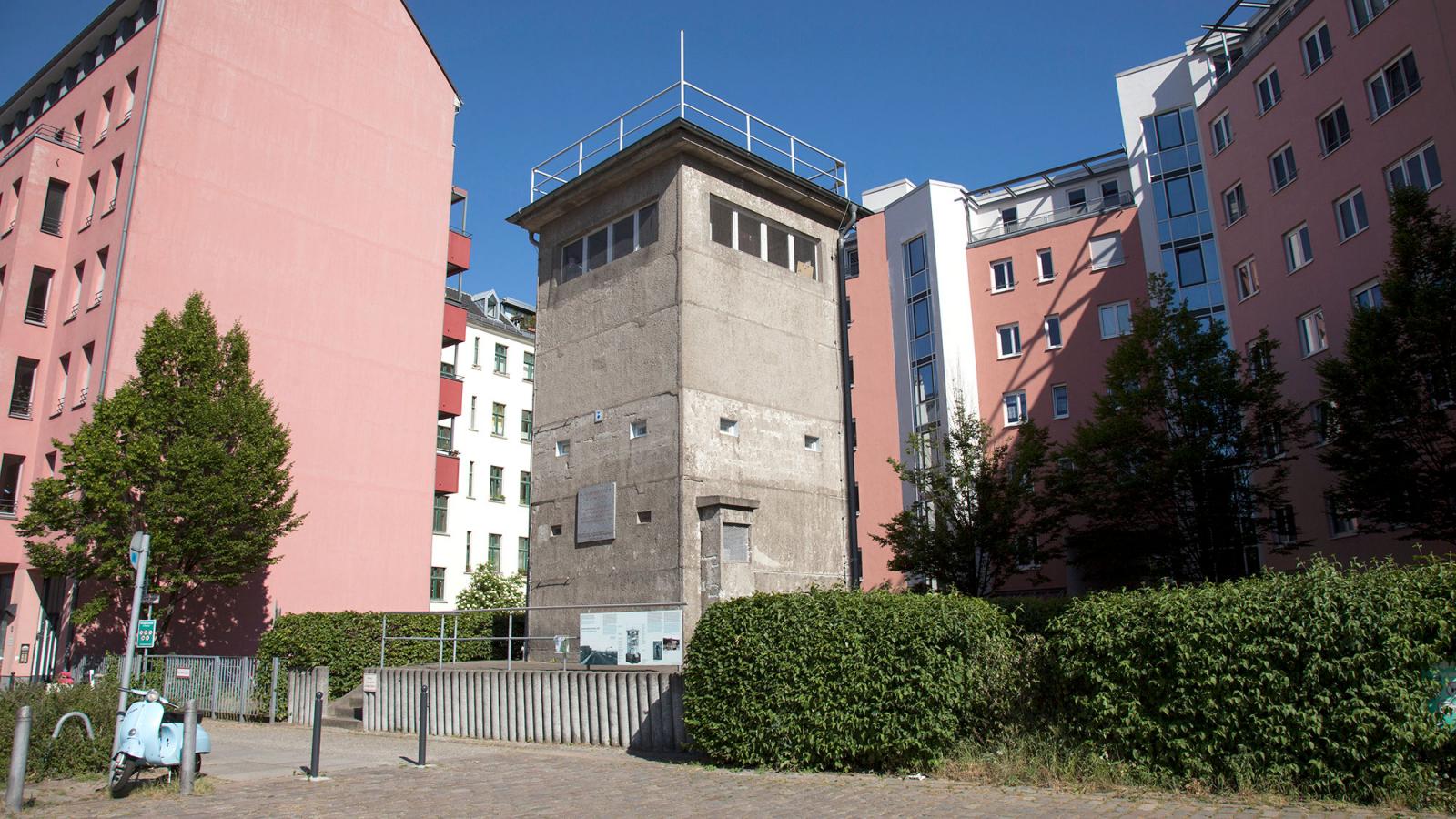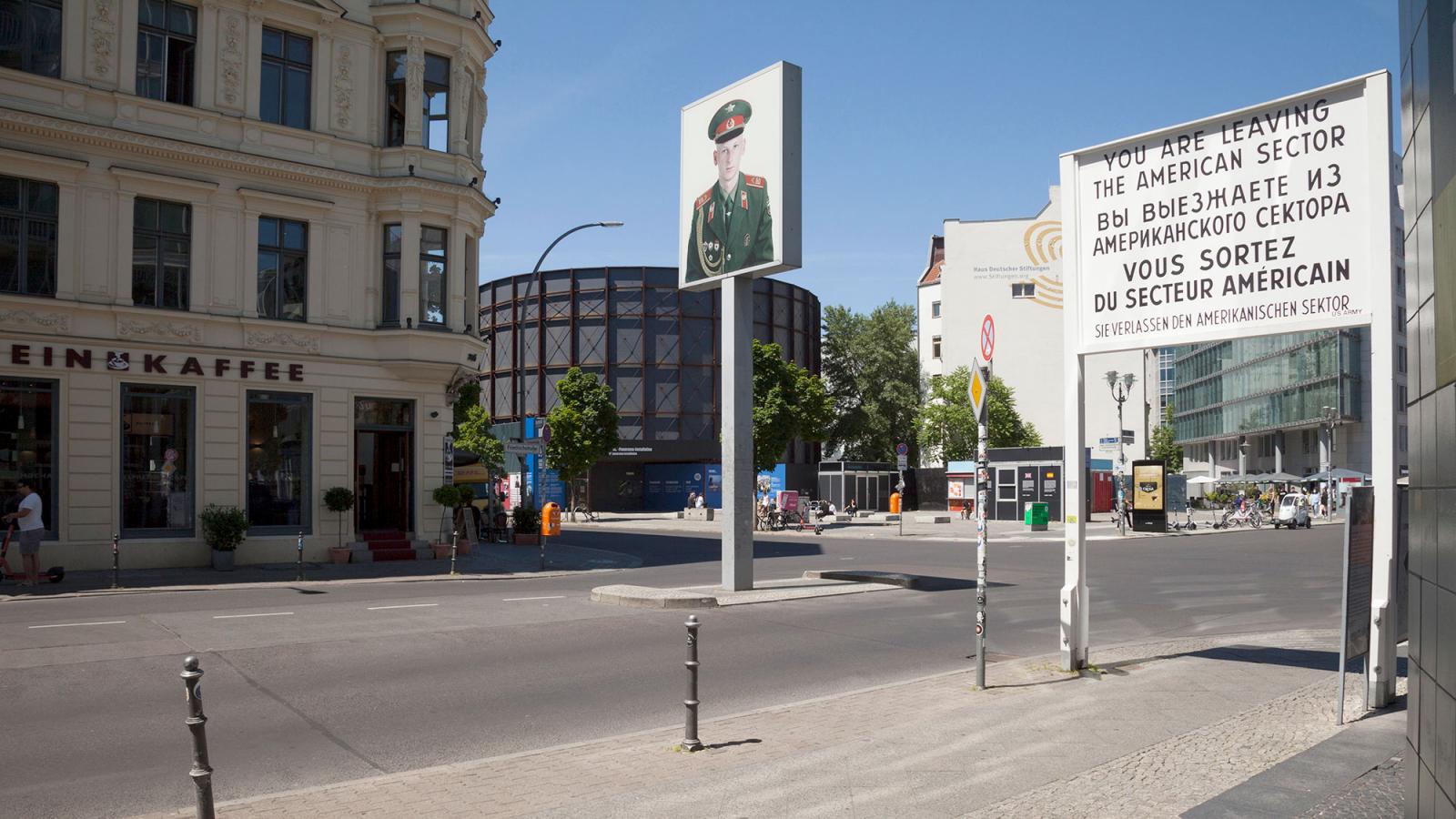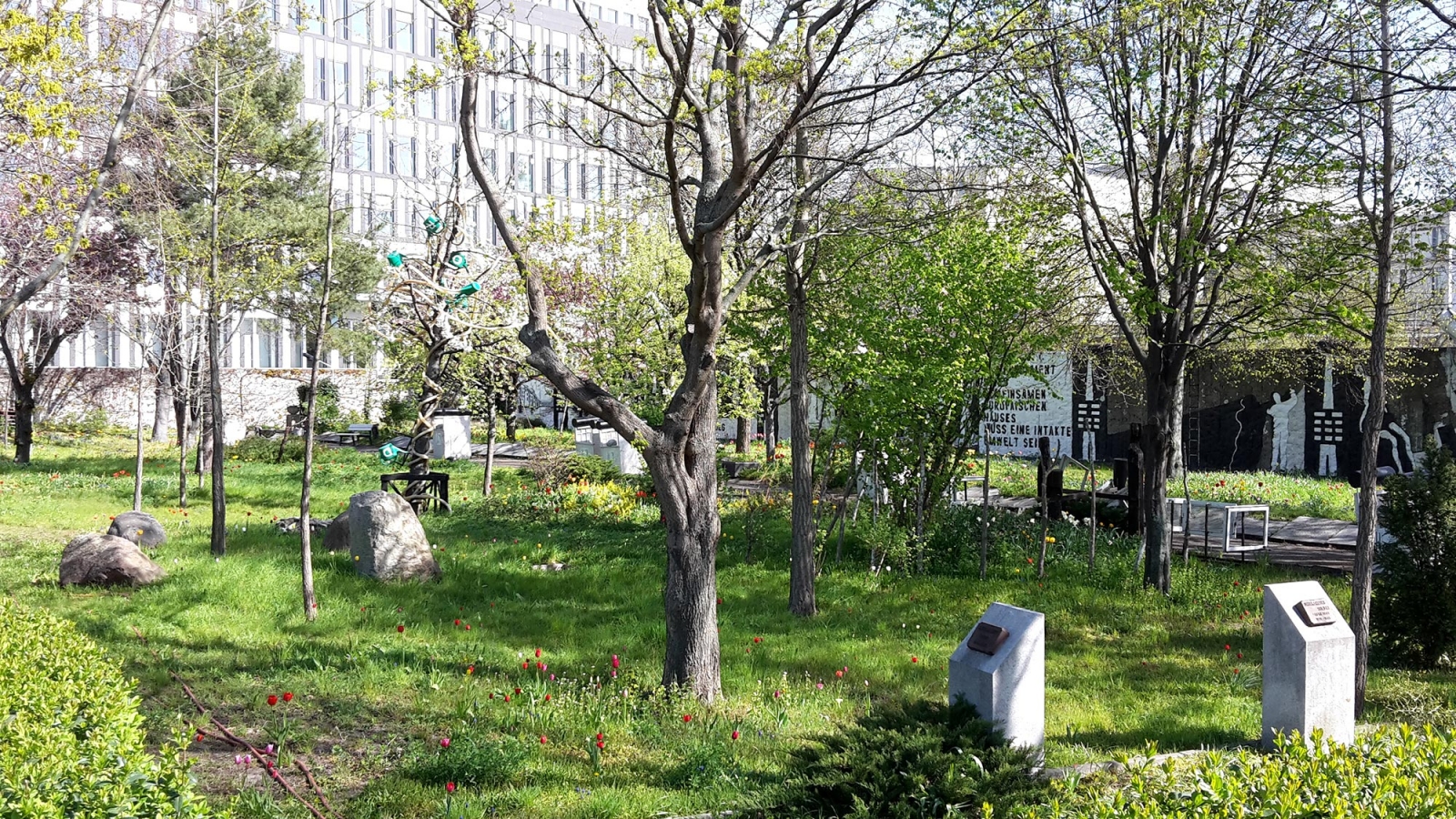Sites
The Berlin Wall Foundation documents the history of the Berlin Wall and the migration movements from the GDR that occurred as part of and under the impact of Germany’s division and the East-West conflict in the 20th century. It conveys history at the historical site
Berlin Wall Memorial
Marienfelde Refugee Center Museum
The museum provides information about flight and emigration from the GDR: It is located at a historical site in the former main building of the refugee center that opened in 1953. Between 1949 and 199, some four million people left the GDR for the Federal Republic, with 1.35 million passing through the Marienfelde refugee center in West Berlin.
East Side Gallery
The longest preserved piece of the Berlin Wall, standing between Ostbahnhof and Oberbaumbrücke, is known worldwide as the East Side Gallery. After the Wall fell, 118 artists from 21 countries redesigned 1.3 kilometers of the former border into the longest open-air gallery in the world. The East Side Gallery stands both as a symbol of joy over the end of Germany’s division and as a historical reminder of the inhumanity of the GDR border regime. Today it is one of the most popular tourist attractions in the capital.
Günter Litfin Memorial
The memorial at Kieler Eck is situated in a former command post of the GDR border troops on the Berlin-Spandau shipping canal. After the Wall fell, it was established as a memorial to Günter Litfin, one of the first victims of the Berlin Wall. It is both a document of the border regime and a testament to a vibrant remembrance culture.
Checkpoint Charlie
Visible traces of border installations, the GDR border crossing or the Allied checkpoint no longer exist at this world-famous historical site. The former GDR border crossing was demolished and almost completely built over. The Berlin Wall Foundation is currently developing a concept to establish an educational center and memorial at this central location.
Parliament of Trees against War and Violence
A living memorial against war and violence in Berlin’s government quarter created by Berlin nature and art activist Ben Wagin in 1990. The site has undergone frequent redesign since then. It commemorates the victims of the Berlin Wall while also condemning all forms of war-related violence. Ben Wagin secured original pieces of the Wall and planted trees in the former border strip as a message of peaceful coexistence. The result is a dynamic ever-changing site of nature, remembrance and art.
